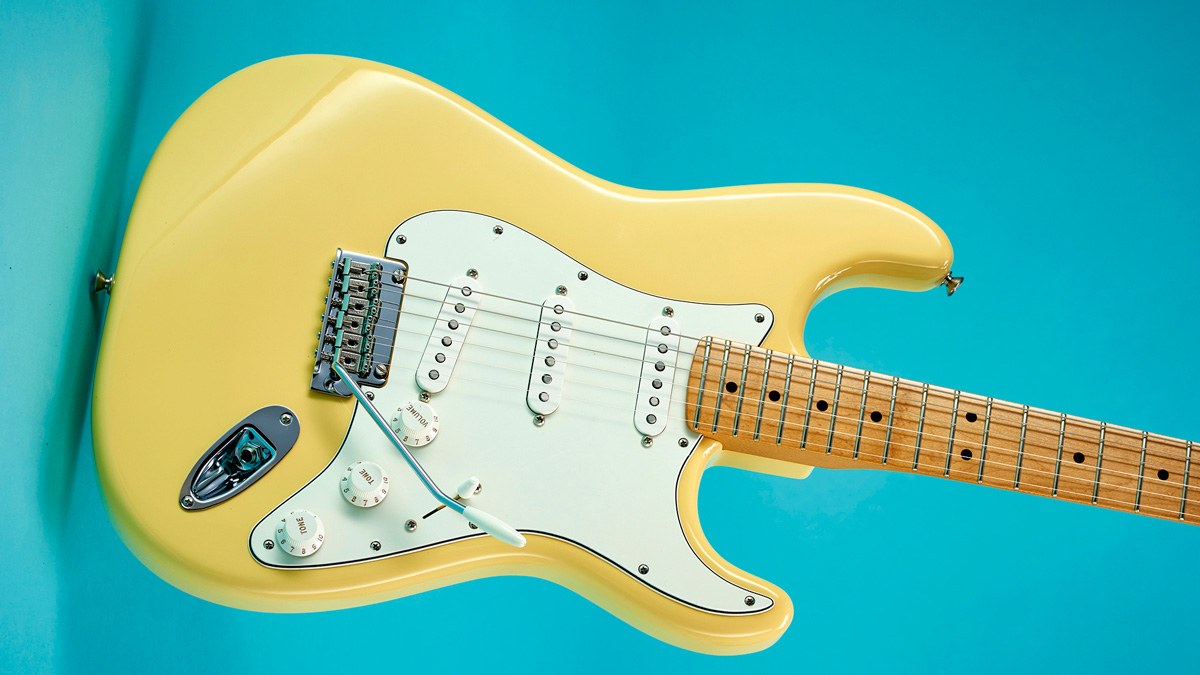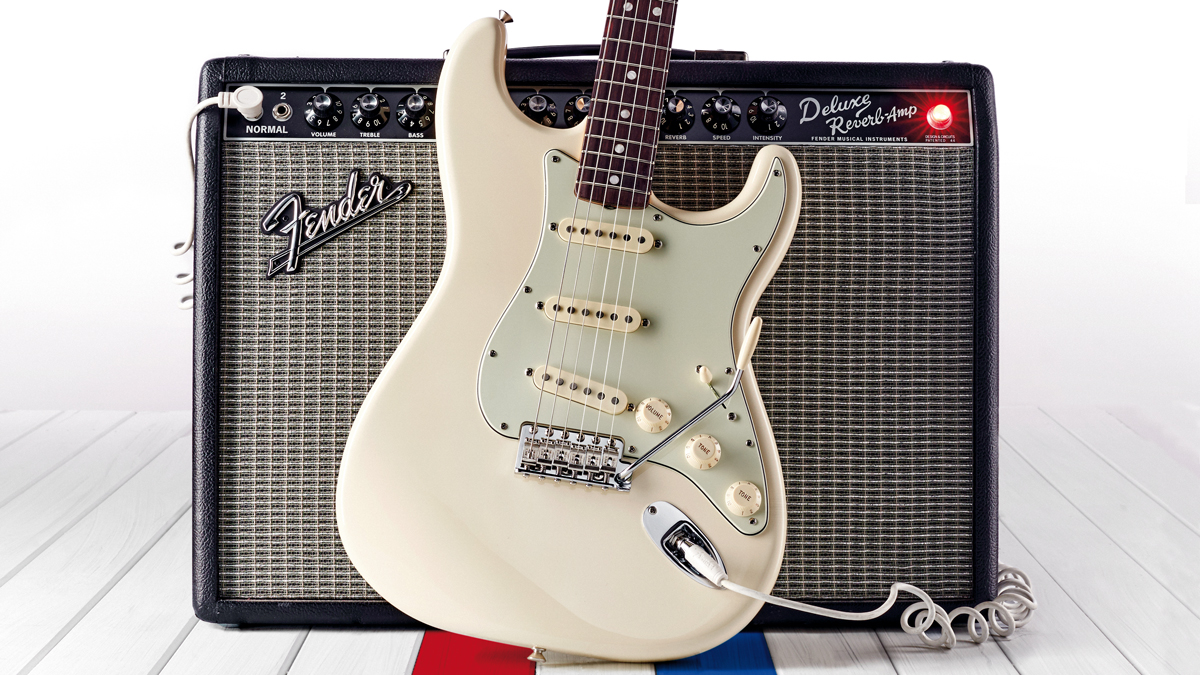MusicRadar Verdict
Fender's Player Series has been a resounding success and this Strat is quite possibly the best they have ever put together for the price. Looking for a mid-price Strat? This is a good deal.
Pros
- +
So very playable.
- +
Wonderful Strat tones.
- +
Take overdrive nicely.
Cons
- -
Tuners are a bit on the stiff side.
- -
Not for the vintage purists.
MusicRadar's got your back
Fender really goes to town whenever it's time to revise its pride and joy, and this Player Series Stratocaster is no exception.
The Player Series takes Fender's classic electric guitar designs, offering a generous range of features for a tricked-out spec that makes them ideal for today's musician, then builds them at the Big F's Mexican factory and sells them at a very attractive price.
- Want to see more? Have a look at the best Fender Stratocasters
- Strats just a bit too... stratty? Here are the best Telecasters
- Not sure what to go for? These are the best electric guitars for all budgets
Just like the Player Series Telecaster, you've got options with the Player Series Strat. You can have a maple or pau ferro ’board. There are HSS, HSH pickup configurations, as and if you are feeling fancy you've even got the flame maple-topped Plus Top and HSS Plus Top – at around £729 street, these top the range.
All of these Strats feature a newly revised two-point vibrato and trio of newly Alnico V single coils.
Our review model is quite traditionally spec'd and finished in Buttercream. Depending on how the light hits it it looks like Vintage Blonde or freshly dolloped custard, but nonetheless we've warmed to it.
As with the Player Series Tele, there's a satin neck to provide a speedy playing experience, and there really are no quibbles with the build quality other than some slightly stiff tuners – but that's a minor thing.

What you do have is a very wide range of tones spread from those pickups and the five-way selector. They recall Fender’s fat Texas Hot single coils and as such they work beautifully with gain; you don't lose any treble when rolling back the volume knob.
Want all the hottest music and gear news, reviews, deals, features and more, direct to your inbox? Sign up here.
The bridge pickup can be weedy on mid-priced Strats but here it is rich yet cutting – and if it gets a little on the spiky side, the tone knob is pleasingly responsive, and allows for a precise treble cut. This is a big deal for your tone.
Let's look at the two tone knobs' wiring. Tone 1 handles your neck and middle pickups while tone 2 adjusts the bridge pickup. You won't find that on vintage Strats, which offer no control over the bridge pup, but it is incredibly useful.
If the neck single coil lacks a little presence, it positively lights up when used in combination with the middle, which some serious quack attack on offer.
The new two-point vibrato is neat. It's one of the smoothest-operating systems we’ve used at this price, returning perfectly to pitch
The new two-point vibrato is neat. It's one of the smoothest-operating systems we’ve used at this price, returning perfectly to pitch. You might find that old familiar problem with the whammy bar coming loose in the socket problem but a little bit of tape around the thread will fix it.
Strats are Strats and thus can never outrun their past; they will always pay homage to former glories, but what is great about the Player Series model is that it references tones from across the Strat's history and bring's them right up to date.
MusicRadar verdict: Fender's Player Series has been a resounding success and this Strat is quite possibly the best they have ever put together for the price. Looking for a mid-price Strat? This is a good deal.
Mike has been Editor-in-Chief of GuitarWorld.com since 2019, and an offset fiend and recovering pedal addict for far longer. He has a master's degree in journalism from Cardiff University, and 15 years' experience writing and editing for guitar publications including MusicRadar, Total Guitar and Guitarist, as well as 20 years of recording and live experience in original and function bands. During his career, he has interviewed the likes of John Frusciante, Chris Cornell, Tom Morello, Matt Bellamy, Kirk Hammett, Jerry Cantrell, Joe Satriani, Tom DeLonge, Radiohead's Ed O'Brien, Polyphia, Tosin Abasi, Yvette Young and many more. His writing also appears in the The Cambridge Companion to the Electric Guitar. In his free time, you'll find him making progressive instrumental rock as Maebe.


